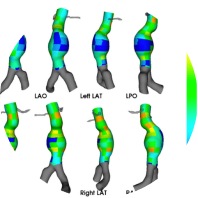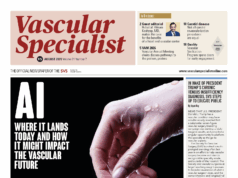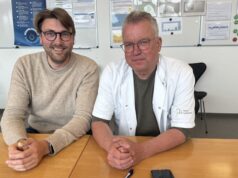
The characterization of aortic tissue by means of three key biomechanics-based biomarkers bundled into a compound Regional Areas of Weakness (RAW) Map showed “very good performance” as part of an artificial intelligence (AI)-based prediction of faster than average growth for a population of abdominal aortic aneurysm (AAA) patients under serial monitoring, according to a new study published in the Journal of Vascular Surgery-Vascular Science (JVS-VS).
The retrospective study was conducted into 36 AAA patients undergoing surveillance by electrocardiographically (ECG)-gated computed tomography angiography (CTA) at the University of Calgary in Alberta, Canada, by a team of researchers led by vascular surgeon Randy Moore, MD, and Elena Di Martino, PhD, a professor of biomedical engineering, using the emerging ViTAA Medical Solutions technology, which aims to provide an algorithm-driven route to precision care.
The RAW Mapping assessment of aortic weakness incorporates time-averaged wall-shear stress, in-vivo principal strain and intraluminal thrombus thickness. “The use of features based on the functional and local characterization of the aortic tissue resulted in a superior performance in terms of faster than average growth prediction when compared to models mostly based on geometrical assessments,” the research team concluded from the published analysis.
The technology deploys an AI model to predict accelerated aneurysmal growth, with the current study looking at RAW Mapping’s ability to predict growth and AAA evolution within a year. Future work will focus on expanding the investigation and growth prediction over a longer surveillance period, the investigators reported. Further research will also aim to broaden the applicability of the methodology to different imaging modalities and protocols used to monitor AAAs.
“The ability to access functional information related to tissue weakening and disease progression at baseline for individual aortas has the potential to benefit patient monitoring, risk stratification and treatment selection, and optimize precision-based aortic care,” the researchers added.












